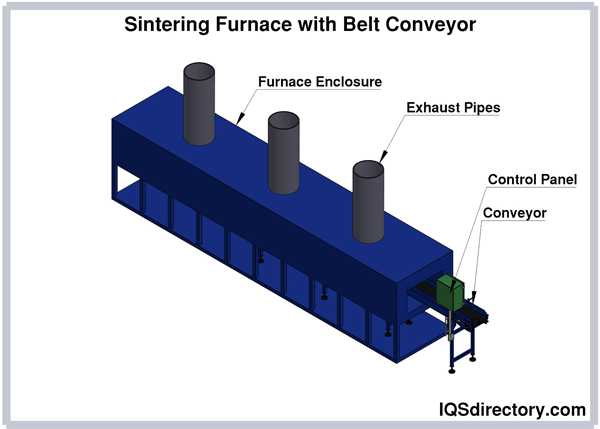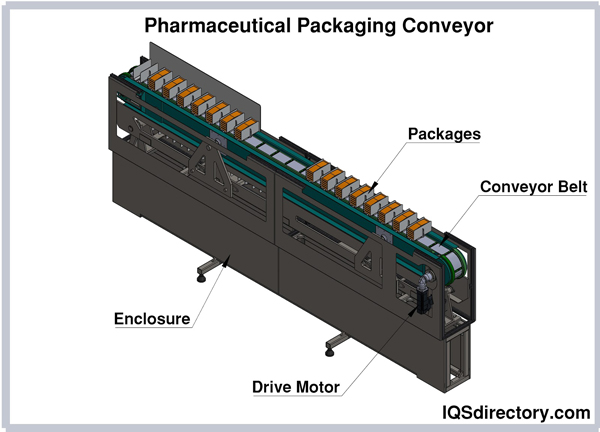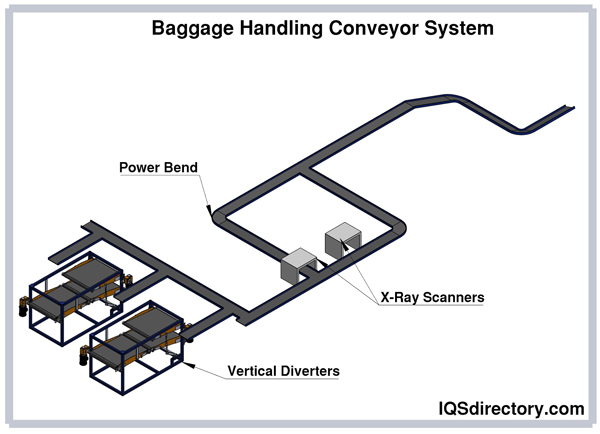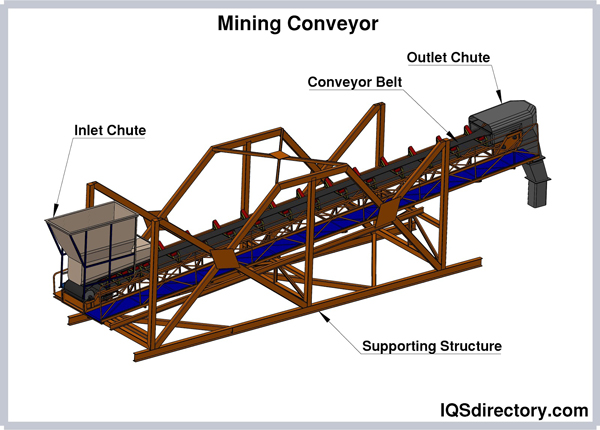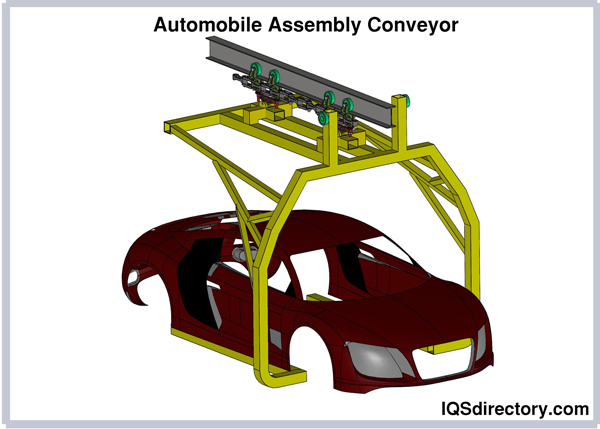As automation and production have become more technologically advanced, conveyors have rapidly developed into an essential part of material processing and movement as well as enhancing the speed of various production operations.
Conveyor System Applications
Sintering:
Sintering is a production process used to significantly lower the temperature of a piece just below its melting point to shape and form the piece. Conveyors transport the piece into the high temperature furnaces for the sintering process.
Packaging:
A packaging conveyor is designed to assist with product packaging, such as placing finished products in containers, efficient labeling, or preparation of products for shipping. The function of a packaging conveyor system is to move products from completion and assembly for shipment. They provide a safe method of moving materials and avoid the need for employees to carry heavy items.
Production Line:
A production line conveyor is designed to bring work to workers, which avoids the need to move an assembly crew. The advantages of a production line conveyor is to easily move products through the assembly process for each task to be efficiently performed. What begins as raw materials at the beginning of the assembly process is a completed product at the end.
Pharmaceutical:
The pharmaceutical industry requires specially designed conveying systems that can be installed in a sterile environment but be flexible, reliable, and easily accessible to prevent contamination. Pharmaceutical conveyors move products in and out of sterilization processes that use toxic chemicals. This requires conveyors made of materials capable of withstanding such exposure.
Metalworking:
The demands for metal production has increased the use of conveying systems to improve productivity and efficiency. The various processes of metalworking can be completed accurately and precisely by using a conveying system. Cutting and molding for the production of large quantities of products can be done quicker. Press out conveyors are used to remove molded pieces from the pressing line or on to other operations.
Airport:
Though airports have people moving conveyors, the main conveying system is for luggage handling, which speeds up the process of getting luggage from the checkin counter to the airplane and off the airplane to luggage pickup. Highly sophisticated and complex systems limit manual involvement and move packages and bags. Airport conveying systems employ several different varieties of conveying systems, which can be on an angle, vertical, or horizontal.
Mining:
Conveyors are essential for mining operations to move raw materials but must be durable enough to withstand extremely harsh conditions. Most mining operations are in secluded areas that make it difficult for trucks to access. Mining conveyors remove the need to create a means for trucks to reach the operation. Though mining conveyors vary in size and length, the majority of them are on an incline and move several tons of material. They have to be evenly loaded to avoid spillage or empty spaces. Depending on the design, they operate very rapidly up to 100 fpm.
Automotive:
The automotive industry uses several varieties of conveyors for material handling. Parts and car bodies can be easily moved from one operation to the next. They are especially helpful in moving heavy items such as doors, bumpers, chassis, and frames.
Food Processing:
Food conveyors move foods and organic materials safely and quickly at a lower cost than that of manual labor. The term food conveyor covers a variety of systems that includes rollers, belts and dumpers or anything used to move food products through the manufacturing process. As with all conveying systems, food processing conveyors are customized to fit the needs of the manufacturer and the application. The one factor that makes them unique is the requirement to meet governmental regulations for sanitation and cleanliness.
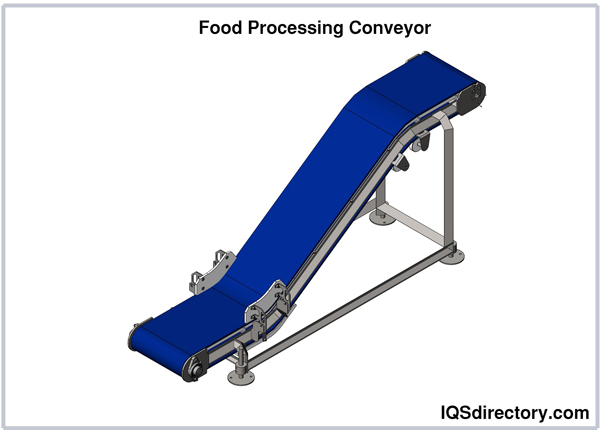
Printing:
Printing conveyors, for screen printing, use a conveyor dryer process for drying screen printed material. Though there are other methods for drying screen prints, conveyor dryers are used for large volume production and come in several varieties. In the drying process, hot air is forced on to the garment at a controlled temperature with an even flow as the item passes along the conveying system.

